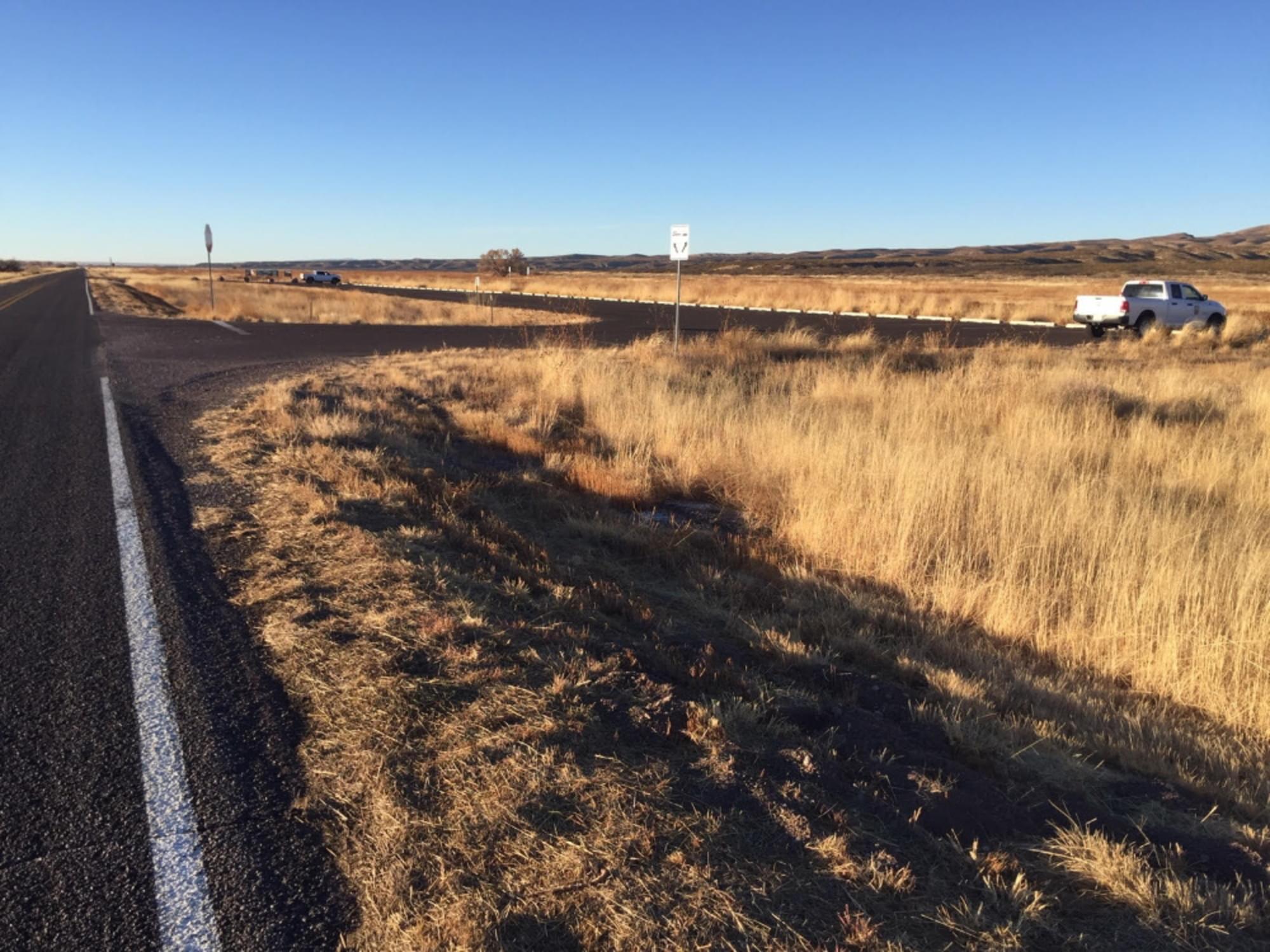Bosque del Apache NWR--NM-1 to North Observation Area

Bosque del Apache NWR--NM-1 to North Observation Area
San Antonio, New Mexico 87832
Bosque del Apache National Wildlife Refuge websiteFriends of Bosque del Apache NWR website
Bosque del Apache NWR Important Bird Area (Audubon) website
Habitat! Guide to Bosque del Apache NWR booklet
Bosque del Apache National Wildlife Refuge map
Tips for Birding
Bosque del Apache National Wildlife Refuge Auto Tour Loop
This location, also known as the Wetlands Roost, is the most northerly hotspot on the refuge, being located 1 mile south of the north refuge boundary (or about 3.5 miles north of the Refuge Visitor Center), on the west side of NM-1. A large, paved parking area overlooks grasslands that stretch to the creosote-covered bajada of the Chupadera Mountains.
This secondary-succession grassland was historically managed by the refuge as a seasonal wetland with water brought south by the San Antonio Ditch, attracting large numbers of wintering Sandhill Crane and Snow Goose. However, persistent drought and the low level of water management structure development, along with the relatively poor nutritive value of present grasses, have resulted in water being allocated elsewhere on the refuge during recent years. Therefore, eBird records before 2020 are not indicative of the species and number of birds to be currently viewed at this hotspot.
Species observed now, depending on the season, include Western Meadowlark, Northern Harrier, Lesser Nighthawk, Say’s Phoebe, Horned Lark, and Tree Swallow. Various sparrow species may also be encountered, including but not limited to Cassin’s, Vesper, Chipping, and Savannah. Sandhill Crane and Snow Goose may be sighted distantly to the east flying north on winter mornings or flying south on winter afternoons.
About Bosque del Apache National Wildlife Refuge
See all hotspots at Bosque del Apache National Wildlife Refuge
Established in 1939 to provide a critical stopover for migrating waterfowl, the refuge is well known for the thousands of sandhill cranes, geese, and other waterfowl that winter here each year.
Situated between the Chupadera Mountains to the west and the San Pascual Mountains to the east, the 57,331-acre refuge harbors a wild stretch of the Rio Grande, a ribbon of cottonwood and willow trees visible on the landscape from distant mesas.
Petroglyphs tell the story of ancient people who lived and hunted here. The river and its diversity of wildlife have drawn humans to this area for at least 11,000 years when humans migrated along this corridor, sometimes settling to hunt, fish, and farm. Artifacts and stone tools found nearby tell us that nomadic Paleo-Indian hunters pursued herds of mammoth and bison in the valley.
Today, Bosque del Apache is part of the National Wildlife Refuge System, a national network of lands and waters set aside and managed for the benefit of wildlife, habitat, and you.
Features
Roadside viewing
Restrooms on site
Wheelchair accessible trail
Entrance fee
Content from Bosque del Apache National Wildlife Refuge website, Birding in New Mexico (National Audubon Society), and John Montgomery
Last updated March 10, 2024
